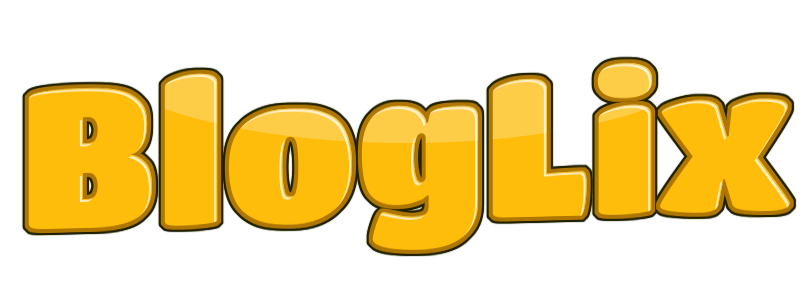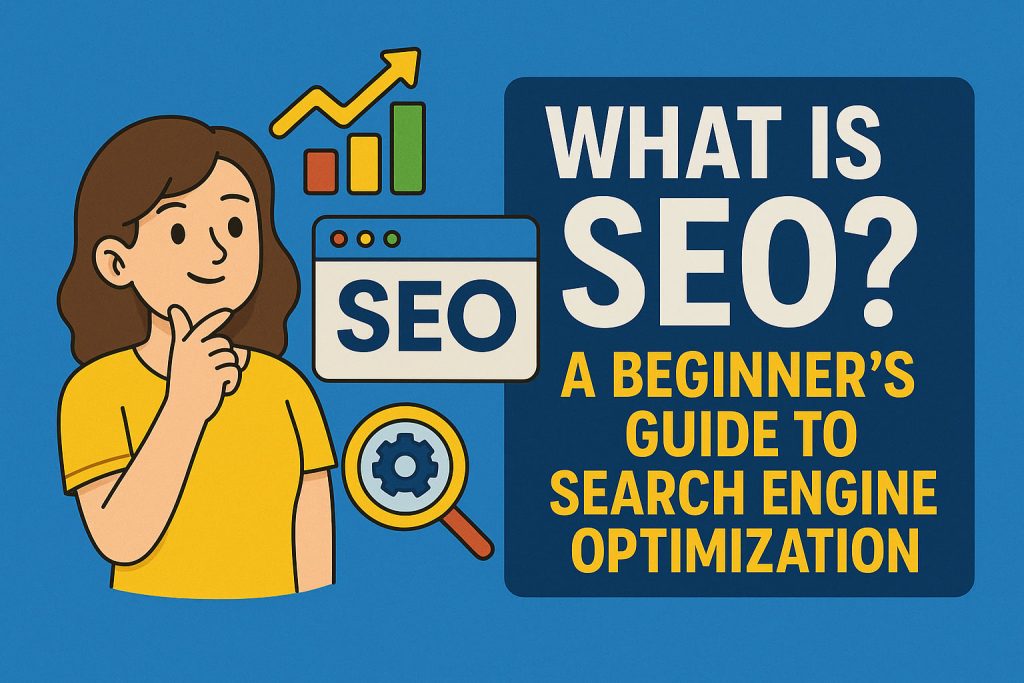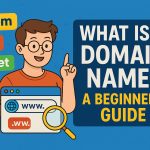You’ve probably heard the term search engine optimization or SEO tossed around, especially if you’re building a website or starting an online business. But what exactly is it? And more importantly, how does it help you grow online?
Let’s demystify SEO and show you how it can be the game-changer your digital presence needs.
What Is Search Engine Optimization? Search engine optimization (SEO) is the practice of improving your website so it ranks higher on search engine results pages (SERPs) like Google, Bing, and Yahoo. The higher your pages rank, the more likely users will click on your links.
In essence, SEO is about making your content more discoverable, more relevant, and more valuable to your target audience.
Why SEO Matters More Than Ever In today’s digital world, search engines are the starting point for nearly every online journey. Consider these stats:
93% of online experiences begin with a search engine.
75% of users never scroll past the first page of Google.
Organic SEO is 5.66 times better than paid search ads, according to New Media Campaigns.
So if you’re not showing up when people search for what you offer, you’re missing out on a major chunk of traffic and conversions.
How Search Engines Work (Simplified) Understanding how search engines work is essential to understanding SEO.
Step 1: Crawling Search engines use bots (also called spiders) to discover new and updated web pages.
Step 2: Indexing Once crawled, pages are stored and organized in the search engine’s database or “index.”
Step 3: Ranking When a user types in a query, the search engine pulls relevant pages from its index and ranks them based on hundreds of ranking factors.
The 3 Core Pillars of SEO SEO isn’t a single action—it’s a combination of strategies. Here are the three major types:
- On-Page SEO Focuses on optimizing content within your website:
Keyword research and usage
Title tags and meta descriptions
Image alt text
URL structure
Internal linking
- Off-Page SEO Involves strategies outside your website:
Backlink building
Social sharing signals
Online reviews and citations
- Technical SEO Ensures that search engines can crawl and index your site efficiently:
Mobile-friendliness
Site speed
Secure connections (HTTPS)
XML sitemaps
Core Web Vitals
On-Page SEO: Crafting Content That Ranks Your content should satisfy both search engines and users. Here’s how:
Use your focus keyword (e.g., search engine optimization) naturally in headings and content.
Write for humans, not just algorithms. Keep it clear, helpful, and engaging.
Optimize meta tags: Your title and meta description should entice clicks.
Add visuals like images, videos, and infographics to increase retention.
Include internal links to help users navigate your site.
Keyword Research: The Backbone of SEO Keywords are what users type into search engines. Finding the right ones means understanding your audience.
Tools to Use: Google Keyword Planner
Ubersuggest
AnswerThePublic
Pro Tip: Focus on long-tail keywords like “how to do SEO for a small business”—they’re less competitive and more targeted.
Off-Page SEO: Earning Your Authority Google sees backlinks (links from other websites to yours) as votes of confidence.
Ways to Build Backlinks: Guest posting on relevant blogs
Submitting your site to directories
Creating shareable infographics
Reaching out to influencers and thought leaders
Warning: Avoid black-hat techniques like buying links. They can lead to penalties.
Technical SEO: Building a Strong Foundation Even the best content won’t rank if your site has technical issues. Here are must-haves:
Mobile-first design: Google uses mobile-first indexing.
Fast load speed: Use tools like PageSpeed Insights.
Secure site (HTTPS): It’s a trust and ranking factor.
Clean site architecture: Easy for bots and humans to navigate.
How to Measure SEO Success Tools to Use: Google Analytics: Tracks traffic, bounce rate, and user behavior.
Google Search Console: Monitors performance and indexing issues.
Ahrefs or SEMRush: Track backlinks, keyword rankings, and competitors.
Metrics That Matter: Organic traffic growth
Keyword rankings
Click-through rates (CTR)
Bounce rate and time on page
SEO vs. Paid Ads: What’s the Difference? Feature SEO Paid Search (PPC) Cost Free (long-term) Pay-per-click Time to Results Slow (months) Fast (days) Longevity Long-lasting Ends when budget runs out Trust Level Higher (organic) Lower (ad label shown) SEO is a long-term strategy, while paid ads are better for immediate traffic.
Real-World Example: SEO Success Story Let’s say a small business owner runs a handmade soap store. Initially, their site barely shows up on Google. But after:
Publishing blog posts with keywords like “natural soap benefits”
Earning backlinks from skincare blogs
Optimizing images and meta descriptions
…their site climbs to the first page for several search terms, and sales increase by 80% in six months.
That’s the power of SEO.
Common SEO Mistakes to Avoid Keyword stuffing: Overusing keywords ruins readability.
Ignoring mobile users: Most traffic is mobile.
Skipping meta descriptions: They impact click-throughs.
Not updating content: Stale pages lose rankings.
Final Thoughts: SEO Is a Long Game Worth Playing SEO isn’t a one-time task—it’s an ongoing strategy. But with patience, consistency, and smart execution, search engine optimization can become your most valuable digital asset.
It helps drive traffic, build brand authority, and grow your business over time. Whether you’re a blogger, entrepreneur, or local business owner, SEO is your ticket to being found online.



